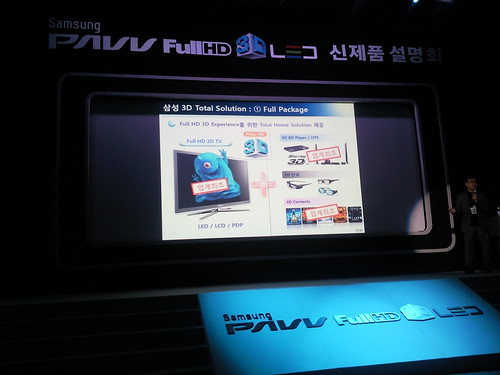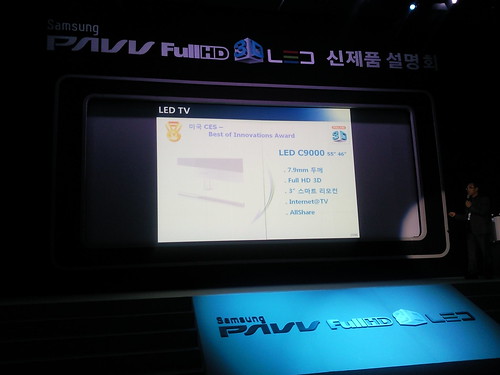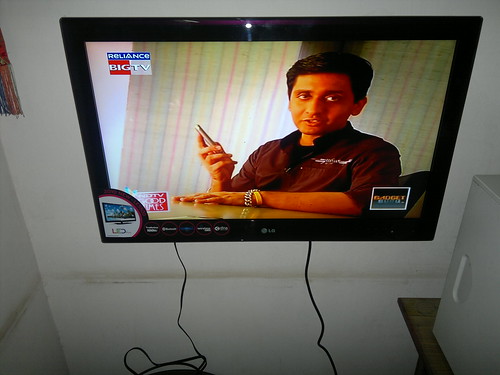Visit : Samsung PN50C6500
Tuesday, November 22, 2011
Revoltec SMD LED 15 Multi-Color LED Backlight
Sunday, May 22, 2011
The preaching of the 3D LED backlight TV

After six years of development, the LCD market is almost completely in many developed countries like Japan and America. When the tree replace the TV at the end of the next machine, an LCD monitor requires more new features to attract customers before the change to the machine. Both LED-backlit display and 3D technology play an important role in this period. It is claimed that the permeability of the LED-TVeighteen percent, which accounts for 34 million units. The costs will be again next year, which stimulates a decline in demand in a natural way. It is claimed that the permeability of LED televisions are the percentage has reached forty-three, and the amount is to be 94 million €.
If the development of LED TV will be successful based on the provision of light guide plate. The capacity expansion of PMMA, the annual growth rate of seventeen percent. L 'PMMA light guide plate has not been verified successfully, so that treatment is better than last year. In fact, the real problem of uneven distribution of light guide plate. For example, the ability of the light guide plate is set, because the sale of LED products are not as good as expected recently. The application of LEDs in the second quarter of 2011, but the offer is not the question at that time.
The 3D-TV is anotherFocal point this time. It is claimed that the permeability of the place 3D television to 8.3% next. The glasses are still the mainstream in a 3D technology that takes advantage of Eighty-one percent of the report. The PDP, a come-back with the release of 3D TV for its high refresh rate. It takes 28 percent of 3D shutter glasses. Even if the technology advances, the 3D TVnaked eye is the ultimate goal. The chip was DG506ACJ.
Monday, April 18, 2011
LED backlight - TV is Going Green

The latest generation of LCD TV technology is a huge 40% more efficient than last years models. Samsung, Sony and Toshiba have all the lights in the background introduced the TV using LED instead of CCFL backlight power hungry several years used in previous years. To control, energy consumption, measures Techtree.com on a "46 LCD TV with a power meter with power saving settings. The energy consumption measuredranged from 72W and 116W depending on the level of energy savings. In contrast, LG 42 "plasma TV mode consumes between 150W and 255W depending on the Eco.
Samsung, the technology called "LED TV", has been heavily criticized by competitors. The TV is equipped with LED backlighting, LED TV is not real as the most advanced technology called Organic LED (OLED) TV An OLED panel. Using various materials andthere is no need for backlighting, power consumption very low. Pixels are organic compounds, the electric current causes each pixel of light made you react. Sony launches the first consumer OLED screen last fall, but the display measures only 11 inches and sells for $ 2,499. Sony could be a living model enterprises by the end of the year, but do not expect it to be accessible. A large screen OLED TV is several years away from mass market Production.
In addition to the above OLED technology, Sony has a service named Bravia LCD TV. Use the Bravia Edge LED backlight, so that the LEDs are mounted to the series on the page, instead of a backlight. In this way, the Bravia is a very thin profile to be achieved.
Toshiba offers LED-backlit Arena is the REGZA SV670. The TV model incorporates the company FocaLight Full-matrix> LEDs with local dimming LED backlighting instead of the edge. In this way different groups of LEDs are controlled independently to achieve deep blacks without a peak brightness. This TV is obviously deliver a dynamic contrast ratio of 2,000,000:1.
In view of the ecological footprint, there is still some debate as to whether the LED backlight technology is better. LED backlit LCD TVs have a longer life and better efficiency thanother high-definition display. LEDs also do not use mercury, thereby reducing the problems with TV are available. But they are two spots with undesirable substances, gallium and arsenic in the manufacture of LEDs.
Friends Link : LG 55LX6500
Saturday, April 9, 2011
What is the difference between a traditional LCD TV and a LED backlight?

There are many electronic products on the market today that is very difficult to try to understand what is happening regarding the name and the technology behind it. One example is the TV LED backlit LED or LCD TV, which is an increasingly popular choice in relation to the television market. It 'has been estimated the new element of fun for some families.
Most conventional LCD televisions use cathodeLamps, or CCFL backlight. However, the use of light emitting diodes, or LED TV LED as backlight. One of the main challenges in relation to the light emitting diode is the fact that it is too large for pixels on a television screen. So if someone says that the device is an LED TV, never to be true and is probably a combination of other technologies such as. The largest current use of a real LED technology for solid Screens such as those used in stadiums.
Since there is nothing they brought TV, many manufacturers were interested to be true when the range Samsung has announced the launch of its new televisions. The new series is defined as an LED, and the company says, because there is a greater proportion of light in the TV than any other product on the market (the average is 40%), so that they feel the area is called good> LED.
The fundamental difference that exists between the two TVs is the fact that the higher degree of contrast with LED LCD-TV. For a more extensive use of LED backlight means, first, that the shadows of the various images are marked. This means that, overall, a much sharper resolution for the viewer.
Viewers are attracted to the LED-TV due to the fact that there is a much better qualityVisual experience. But this is not the only reason. Those who are more aware of the context very glad to hear that there is a reduction of forty per cent of the amount of energy used by these new televisions. This means they have a good conscience and is certainly a great advantage for the device.
There are several other benefits of LED-backlit LCD TV, compared to a conventional LCD, including a wider choice of colors, greaterRefresh rate and TV thinner and lighter too.
Television has come a long way and the LED TV is just the latest wave of the process. Sony has started a revolution when it introduced the first LED TV and since then, technology has advanced in leaps and bounds. It 'clear that very soon see a steady progress in this line of products and there are exciting times, where our television and probably sharpermore subtle.
Related : LG 50PJ350 Samsung LN37C550 Samsung LN46C530
Thursday, February 24, 2011
LED backlight for LCD-TV

In the highly competitive TV market, LCD factors could maintain their superiority in all because of the many advantages. LCD TV is well known for its energy efficiency. This unique advantage deserves more patronage for the product as part of the upward spiral of energy costs in the world. further energy saving is now part of the overall program. Unlike its competitors, plasma TV, LCD does not suffer burn-in problems. But in someburn models each pixel on the LCD screen causes white spots and blacks. Fluorescent lights illuminate the liquid crystals that are not self-explanatory, luminous figures.
recent past, some changes in LCD TV was away in the background is the lighting. Instead of fluorescent tubes, Matrix Organic Light Emitting Diode (LED, as it is) is known backlight used to. E 'Sony Bravia in their model, the technique above for the first time. The newThe technology, television has given the nomenclature LED LCD. One of the main advantages of this new visualization technique is extended in this new version of LCD TVs. Shorter of view has been a drawback in the LCD display and has also been an irritant in a superior product otherwise. The employment of LED helped to increase the longevity of the LCD. brightness level is also improved. Heat production is greatly reduced. Superb color saturation is found after theInduction of an LED backlight, apart from the color reproduction capability improved.
The conventional LCD TV requires regular replacement of fluorescent tubes. But the introduction of LED backlighting eliminates the need for such replacement of lamps. The durability of the LED system is significant. The use of more than three colors of the LED backlight has helped to overcome the system required by the NTSC standard color palette.Another advantage is that low voltage-backed TV LED can work on other dissimilar. It also reduces the delay in receiving the display as a warm-up system is not necessary. The frame rate is also improved. However, there are small margins in the new system. Local Dimming function is a phenomenon that can increase energy consumption is minimal. Second, this new version of the LCD TV is more expensive than previous models.
Butthe study of experts, the behavioral patterns of consumers in terms of entertainment segment allay such fears. escalating costs in the interest of improving quality is not adversely affected the fortunes of the market products and services. They are able to highlight examples of such behavior in the past. All products that are cheaper do not attract consumers 'patronage'. It is expected that LCD manufacturers to follow Sony's example and adopt LED backlighting intheir products. backlit LED technology from environmentalists has received support as it is found to pose no risk of contamination by mercury discarded rubbish. Those who do not share the environmental concerns are agreed that the escalation in costs should not be an excuse for the pollution. informed consumers, share this vision and LED-based LCD TV in the future.